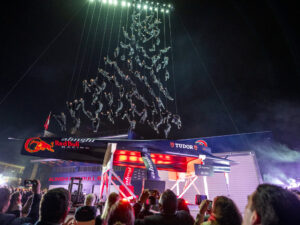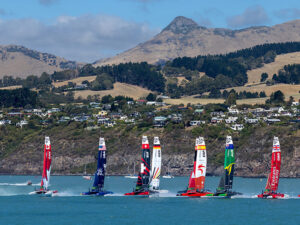I’m sure you’ve all heard the proverb regarding assumptions, about how the act of making them makes an “ass” out of “u” and “me.” I always thought it was fairly clever, and some good advice to boot, but I’d never really applied it to sailing. Calling tactics, after all, involves making countless assumptions—maybe you call them educated guesses—about the near-term future: Is the wind is going to shift direction? Is it going to increase, decrease, or stay steady? What are your opponents going to do over the next 30 seconds? Over the next 10 minutes?
The best tacticians trust their eyes, ears, memory, and instinct and try to play the percentages. It isn’t about being right every time, but rather about being right more times than the opposition.
Still there are a few assumptions in sailing that are best never made, as I found out on the first Thursday night of Newport’s summer J/24 series.
We were off the dock not long after 5 p.m. and the first boat onto the course. After we congratulated ourselves for such an early start to the season, we sailed upwind toward what we thought would be the windward mark. The breeze was north-northeast with the puffs generally coming with a right shift. We all agreed that the most likely first mark would be a small yellow special race mark set between the north tip of Goat Island and the Newport Bridge. With the flood tide and the veering puffs, it seemed obvious that the answer for the first beat was to protect the right side of the course, which would also see a lot less current close to Goat Island.
Then the race committee came out, set up the starting line, and picked for a weather mark a green can smack in the middle of the channel between Goat and Rose Island. Whether it was the best choice is a moot point. It wasn’t the wrong choice. But it was in a different location and drastically changed the tactical options for the race. It brought the Rose Island shore into play, and as it turned out, winning the pin and going left to the current relief off Rose Island was the winning play in both races.
Weeknight race committees can be difficult to predict, especially when they deal with race arenas constrained by land and use government marks for turning marks. Were I able to do that first hour all over again, I would’ve spent more time exploring the entire arena between Rose and Goat Island to get a picture of the exactly what was happening. Then once I realized the course posted was not what I expected, I would’ve tried to push the mental re-set button and apply a more objective assessment of the conditions to the assigned course. Maybe I would’ve made the same mistake, to favor the right side, but at least I would’ve been less surprised when the other side paid off and better prepared to adjust on the fly.









